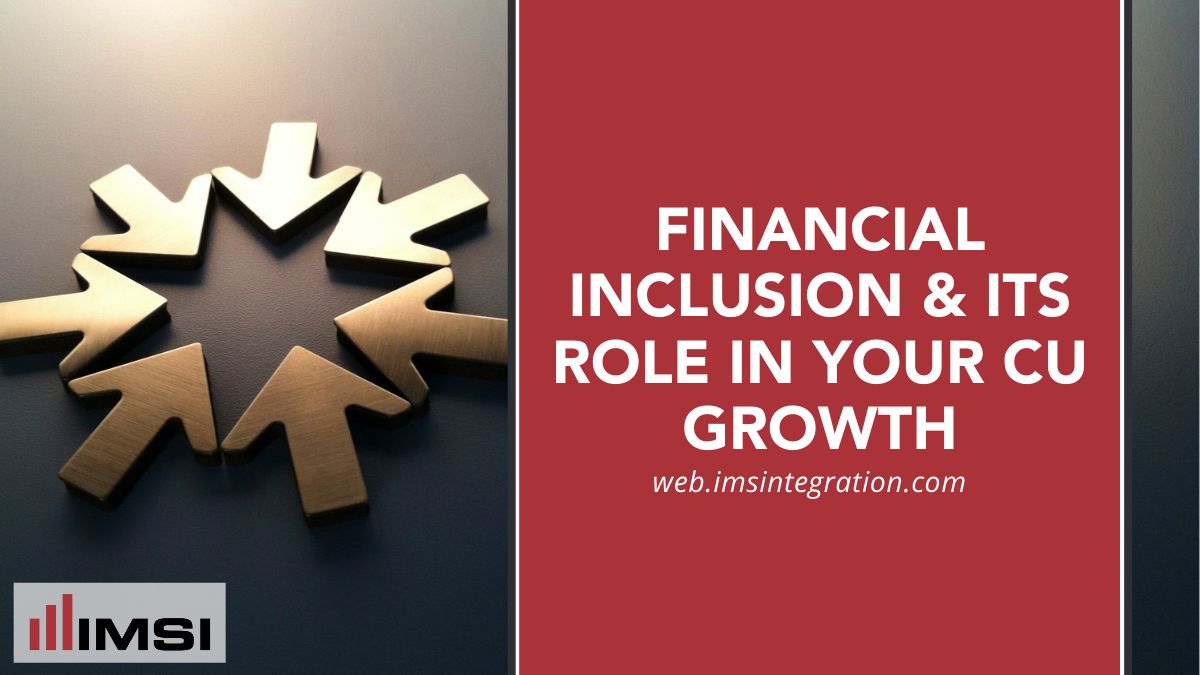Our sister site, IMS, recently featured a blog article discussing ways you can foster financial inclusion within your credit union.
Financial inclusion is part of a larger conversation taking place right now about how individuals and businesses are creating solutions and campaigns that foster diversity, equity, and inclusion for everyone who interacts with their brands.
CUs Are Perfect for Fostering Financial Inclusion
The history of credit unions is one that centers these institutions as a perfect partner in the financial inclusion conversation. Credit unions often serve areas that other banks and financial institutions don’t focus on. This includes marginalized and underserved communities in both urban and rural areas of the country.
As member-owned, not-for-profit businesses, credit unions have the luxury of already being positioned to create solutions that serve communities with specific cultures and religious affiliations, and even areas with specific financial needs.
CUs already work to promote local businesses and local charities. The conversation doesn’t have to be about catering to massive audiences and trying to implement a bunch of one-size-fits-all programs that can help everyone in small ways.
You can create spaces that highlight the cultures and perspectives that most represent and foster the diversity of the communities you’re already serving or are hoping to serve in the future.
Stabilizing Financial Tools
Many areas with diverse populations (both in culture as well as financial situation) will also benefit from the stabilizing financial tools that come from the implementation of financial inclusion practices.
These can be things like helping set up accounts so that those who are receiving government assistance like unemployment are able to access those funds quickly and record them accurately for tax and other financial planning purposes. It can also include things like calculator tools for car or mortgage payments, online self service forms, eStatements, online account opening, and Skip a Pay.
These stabilizing financial tools can help orient members who are still learning how to manage their finances, encourage others to enroll in programs that can help them pay down debt or increase their savings, and so much more.
It Starts with Your Staff
Your credit union’s financial inclusion initiatives should start at the employee level. If your staff members are stressed out about their financial situation, studies have shown that they are actually not as productive at work as employees who work in a place that has achieved most or all of their financial inclusion goals.
Close Gaps in Member Desires vs. CU Offerings
Many of the initiatives that are touted as perfect for fostering financial inclusion are often things that your credit union already offers. But the focus here should be on targeting what your underserved communities, like the unbanked and underbanked, would need from those offerings.
For example, your credit union may already have a successful rewards program that works for current members. However, if offering a different set of rewards or a range of choices in what those rewards can be used for, you can target the underserved segments of your communities.
This is a common business practice across all industries. It’s why we have such a big range of vehicles (from luxury sports cars to reliable and affordable sedans and minivans), restaurants, and other consumer-focused businesses.
Your members who are living paycheck-to-paycheck won’t likely be interested in saving for retirement or creating tons of lines of credit to open a business, but the opportunity to capitalize on your services shouldn’t be reserved solely for those in ideal financial situations.
Catering to the unbanked and underbanked means you have to evaluate why and where your current programs don’t meet these potential members’ needs.
Technology Fosters Financial Inclusion
One of the best tools for fostering financial inclusion is technology. Implementing user-friendly and other helpful digital programs, products, and services goes a long way toward closing gaps between your average members and your outliers.
When you are choosing and implementing these digital tools, it’s important to think about how your members can use them. Are there ways to personalize the process or tool? Customization is a great way to use a single tool in a myriad of ways in order to better serve those who are underrepresented in your member ranks.
Financial Inclusion Means Digital Inclusion
Navigating trending credit union topics have long-lasting implications for your CU. And that’s why you need cutting-edge solutions that have been tailored to credit union needs.
IMSI has created credit union-specific products and services that speak to your customers’ needs, no matter their background, financial situation, or culture. With tools like Make a Statement, Online Courtesy Pay+, Online Self-Service Forms, and Trial Balance+ readily available on your CU website, you can meet every potential member where they’re at.
Reach out to us today and request a consultation.




